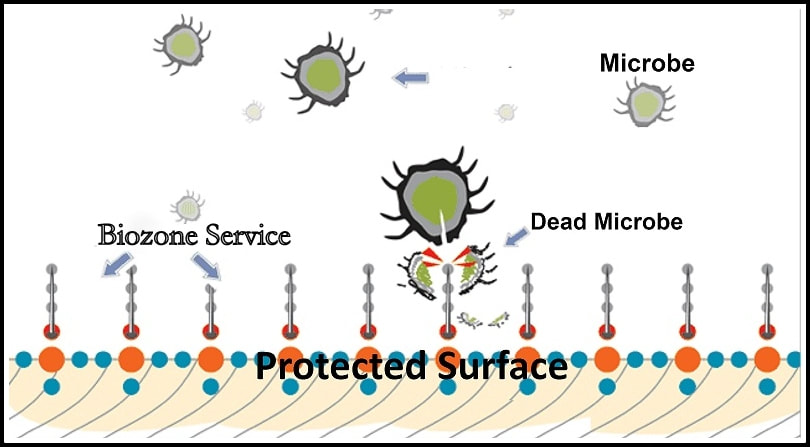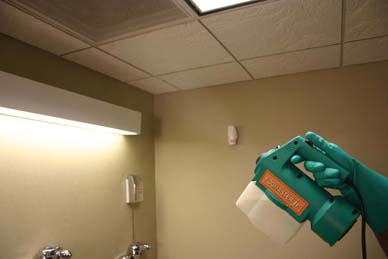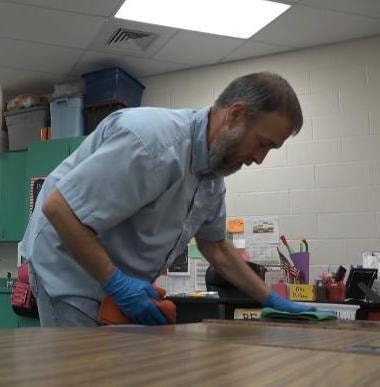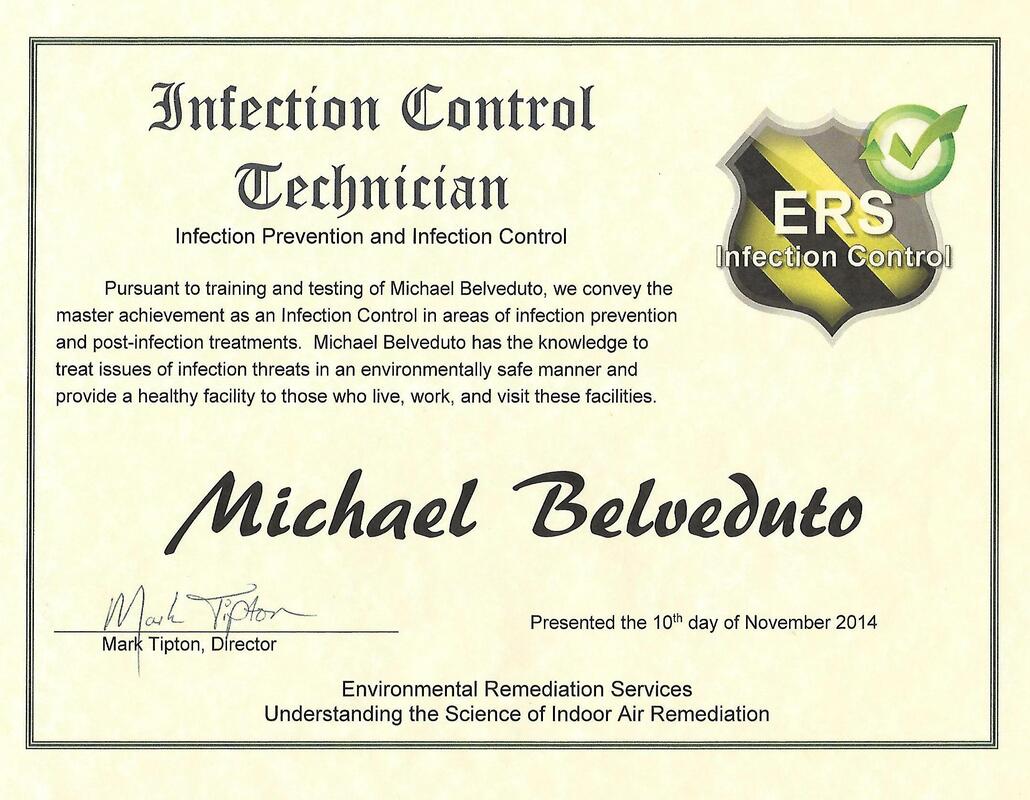SANITIZING SERVICESANTI-MICROBIAL FOGGING BIOZONE GERM KILL SERVICE
WE INACTIVATE CORONAVIRUS ON CONTACT WITH 28 DAY RESIDUAL EFFECTS Superbugs are strains of bacteria that are resistant to several types of antibiotics. The spread of bacteria including such strains as MRSA (Methicillin-resistant Staphylococcus aureus), C-Diff (Clostridium difficile), Escherichia, Salmonella, Gonorrhea Chlamydia and Tuberculosis are all on the rise, and not only in medical facilities. Schools, gymnasiums, offices, airplanes, cruise ships and public facilities and all areas where one can contract an illness. The introduction of Ebola to North America is only one of dozens of illnesses that can be contracted. While Ebola is contracted from direct contact with the carrier, superbugs such as MRSA & C-Diff can be contracted directly from contaminated surfaces. They can be brought into your Commercial Building or Office!
|
INVISIBLE SHIELD OF PROTECTION AGAINST MICROBES
KNOWING THE TECHNOLOGY
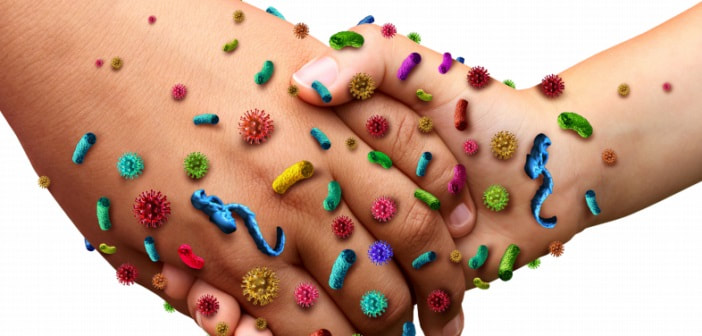
Published March 25 2020, 270 pages, 71 tables, 87 figuresWhen the current global crisis has abated, efforts must turn to future preventative measures.
Nanocoatings can demonstrate up to 99.9998% effectiveness against bacteria, formaldehyde, mold and viruses and are up to 1000 times more efficient than previous technologies available on the market. They can work on multiple levels at the same time: antiviral, bacterial and fungal and self-cleaning.
Nanocoatings companies are already partnering with global manufacturers and cities to develop anti-viral facemasks, hazard suits and easily applied surface coatings.
Their use makes it possible to provide enhanced antiviral, antibacterial, mold-reducing and TVOC degrading processes, that are non-toxic and environmentally friendly, allowing for exceptional hygiene standards in all areas of work and life. As a result, it is possible create a healthier living and working environment and to offer holistic solutions to people with a diminished immune system. Nano-based surface coatings prevent the spread of bacteria, fungi and viruses via infected surfaces of so called high-traffic objects, such as door and window handles in public places, hospitals, public buildings, schools, elderly homes etc.
Antimicrobial, Antiviral, and Antifungal Nanocoatings are available in various material compositions, for healthcare and household surfaces, for indoor and outdoor applications, to protect against corrosion and mildew, as well as for water and air purification. Nanocoatings also reduce surface contamination, are self-cleaning, water-repellent and odor-inhibiting, reducing cleaning and maintenance.
Antimicrobial, Antiviral, and Antifungal Nanocoatings can be applied by spraying or dipping and adhere to various surfaces such as glass, metals and various alloys, copper and stainless steel, marble and stone slabs, ceramics and tiles, textiles and plastics.
Nanoparticles of different materials such as metal nanoparticles, carbon nanotubes, metal oxide nanoparticles, and graphene-based materials have demonstrated enhanced anti-microbial and anti-viral activity. The use of inorganic nanomaterials when compared with organic anti-microbial agents is also desirable due to their stability, robustness, and long shelf life. At high temperatures/pressures organic antimicrobial materials are found to be less stable compared to inorganic antimicrobial agents. The various antimicrobial mechanisms of nanomaterials are mostly attributed to their high specific surface area-to-volume ratios, and their distinctive physico-chemical properties.
Anti-viral nanocoatingsViruses constitute a group of heterogeneous and much simpler organisms. They range in size from 100-300nm, much smaller than bacteria. Viruses are unique in that they have no independent metabolic activities and have to rely solely on infection living hosts to reproduce themselves. Unlike all other life, viruses may contain either DNA or RNA as genetic materials, but not both.
The nucleic materials are surrounded by a protein coat to protect them from harmful agents in the environment. The protein coat also provides the specific binding site necessary for the attachment of virus to its host. Some viruses also contain an outer envelope made up of lipids , polysaccharides , and protein molecules. The lipids and polysaccharides are of host cell organ , and their presence allows a virus to fuse with a host cell and thus gain entry.
A virus not having the outer envelope infects a cell in quit a different manner. Infection is initiated by the attachment of a specialized site on the surface of the protein coat of the virus onto a specific receptor site on the surface of the host cell.
Once this binding is complete viruses can release genetic materials into the host cell and take advantage of the machinery of the host cell to reproduce and assemble themselves. These newly produced viruses are now ready to infect other cells .
Therefore, one of the key processes to disable viruses is through the control of their surface structure, especially their binding sites, so they can no longer recognize the receptor site on the host cells. As many types of nanocoatings attack most effectively on the virus’s surface, they represent an excellent viable technology to destroy the viruses surface structure.
Nanocoatings can demonstrate up to 99.9998% effectiveness against bacteria, formaldehyde, mold and viruses and are up to 1000 times more efficient than previous technologies available on the market. They can work on multiple levels at the same time: antiviral, bacterial and fungal and self-cleaning.
Nanocoatings companies are already partnering with global manufacturers and cities to develop anti-viral facemasks, hazard suits and easily applied surface coatings.
Their use makes it possible to provide enhanced antiviral, antibacterial, mold-reducing and TVOC degrading processes, that are non-toxic and environmentally friendly, allowing for exceptional hygiene standards in all areas of work and life. As a result, it is possible create a healthier living and working environment and to offer holistic solutions to people with a diminished immune system. Nano-based surface coatings prevent the spread of bacteria, fungi and viruses via infected surfaces of so called high-traffic objects, such as door and window handles in public places, hospitals, public buildings, schools, elderly homes etc.
Antimicrobial, Antiviral, and Antifungal Nanocoatings are available in various material compositions, for healthcare and household surfaces, for indoor and outdoor applications, to protect against corrosion and mildew, as well as for water and air purification. Nanocoatings also reduce surface contamination, are self-cleaning, water-repellent and odor-inhibiting, reducing cleaning and maintenance.
Antimicrobial, Antiviral, and Antifungal Nanocoatings can be applied by spraying or dipping and adhere to various surfaces such as glass, metals and various alloys, copper and stainless steel, marble and stone slabs, ceramics and tiles, textiles and plastics.
Nanoparticles of different materials such as metal nanoparticles, carbon nanotubes, metal oxide nanoparticles, and graphene-based materials have demonstrated enhanced anti-microbial and anti-viral activity. The use of inorganic nanomaterials when compared with organic anti-microbial agents is also desirable due to their stability, robustness, and long shelf life. At high temperatures/pressures organic antimicrobial materials are found to be less stable compared to inorganic antimicrobial agents. The various antimicrobial mechanisms of nanomaterials are mostly attributed to their high specific surface area-to-volume ratios, and their distinctive physico-chemical properties.
Anti-viral nanocoatingsViruses constitute a group of heterogeneous and much simpler organisms. They range in size from 100-300nm, much smaller than bacteria. Viruses are unique in that they have no independent metabolic activities and have to rely solely on infection living hosts to reproduce themselves. Unlike all other life, viruses may contain either DNA or RNA as genetic materials, but not both.
The nucleic materials are surrounded by a protein coat to protect them from harmful agents in the environment. The protein coat also provides the specific binding site necessary for the attachment of virus to its host. Some viruses also contain an outer envelope made up of lipids , polysaccharides , and protein molecules. The lipids and polysaccharides are of host cell organ , and their presence allows a virus to fuse with a host cell and thus gain entry.
A virus not having the outer envelope infects a cell in quit a different manner. Infection is initiated by the attachment of a specialized site on the surface of the protein coat of the virus onto a specific receptor site on the surface of the host cell.
Once this binding is complete viruses can release genetic materials into the host cell and take advantage of the machinery of the host cell to reproduce and assemble themselves. These newly produced viruses are now ready to infect other cells .
Therefore, one of the key processes to disable viruses is through the control of their surface structure, especially their binding sites, so they can no longer recognize the receptor site on the host cells. As many types of nanocoatings attack most effectively on the virus’s surface, they represent an excellent viable technology to destroy the viruses surface structure.
WE CAN HELP CALL (570) 562-1128

We INACTIVATE Covid-19 the Coronavirus in Scranton , Wilkes Barre and surrounding counties in Northeast Pennsylvania
